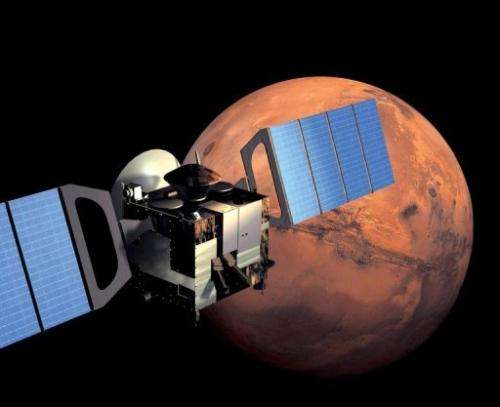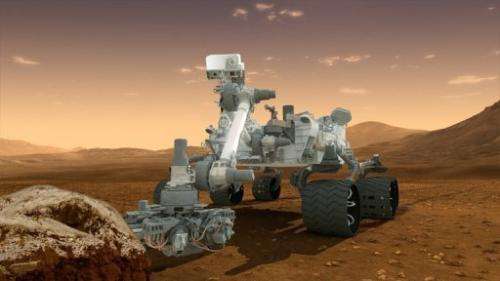European backup for NASA's nailbiting Mars mission

Europe's Mars Express spacecraft will lend its eyes and ears to NASA next week for the so-called "seven minutes of terror" in which the US agency will seek to land a rover on Mars.
As a sort of "European backup service", the satellite will point its antennas at NASA's Mars Science Laboratory (MSL) as it approaches the Red Planet early Monday, Mars Express operations manager Michel Denis told AFP.
It will then change direction again to face the Earth and relay the recorded data.
"We began optimising our orbit several months ago so that Mars Express will have an orbit ... that provides good visibility of MSL's planned trajectory," said Denis.
The European Space Agency (ESA) craft will record MSL signal data from 0510 GMT to 0538 GMT Monday -- "practically until it touches down", before starting to retransmit via ESA's 35 metre-diameter deep-space antenna in New Norcia, Australia.
NASA will attempt to put down the Curiosity, the largest and most sophisticated rover yet, for a two-year quest for signs of past life and water on Earth's nearest planetary neighbour.

It will also collect data for a future human mission there.
The information gathered by Mars Express may prove crucial if anything goes wrong in the nailbiting seven minutes when the MLS, having entered the atmosphere at nearly 21,000 kilometres (13,000 miles) per hour, slows to under 3.6 km/h for a gentle landing.
Alongside the Mars Express, NASA's Mars Odyssey and Mars Reconnaissance Orbiter will also track and relay signal data for what should be a spectacular touchdown.
NASA is expected to confirm touchdown, relayed directly from Curiosity, at 0531 GMT -- after a delay of about 14 minutes for the signal to travel all the way from Mars, said an ESA statement.
"The Martians will know the outcome" long before the NASA team on Earth, quipped Denis.
If all goes well, the information gathered by Mars Express during the landing will boost scientific knowledge about the Red Planet's atmosphere.
And if it does not ... well then the data can be used to analyse the causes of failure and improve future missions.
Denis said ESA's network of Earth-bound antennas will also play their part, standing by to take over from NASA's own if needs be.
The Mars Express, launched in June 2003, represented ESA's first mission to another planet.
Denis said he hoped the vessel can remain in orbit until 2018 or even 2020 -- long enough for the launch of a follow-up European mission.
(c) 2012 AFP




















